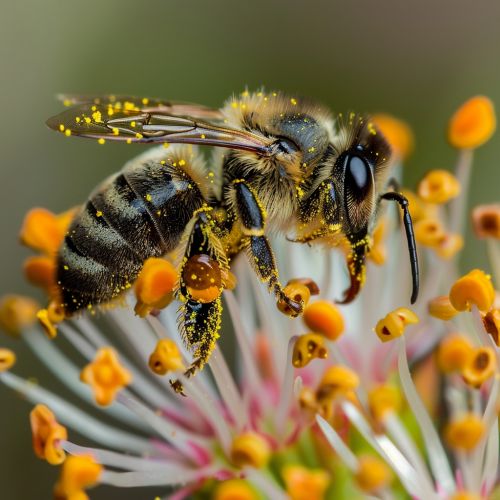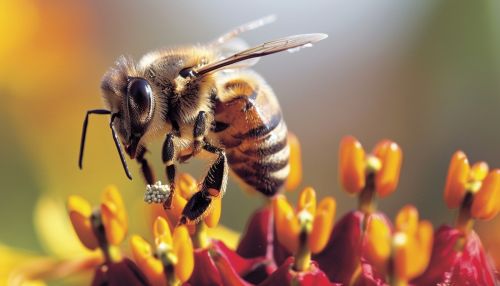Pollen Dispersal
Introduction
Pollen dispersal, also known as pollen transport, is a fundamental process in plant reproduction that involves the movement of pollen grains from the male anther of a flower to the female stigma. This process is crucial for the fertilization of plants and the production of seeds, enabling the continuation of plant species.
Mechanisms of Pollen Dispersal
Pollen dispersal can occur through various mechanisms, primarily divided into two categories: biotic and abiotic dispersal.
Biotic Dispersal
Biotic dispersal involves living organisms, mainly insects, birds, and mammals, that transfer pollen from one flower to another. This type of pollen dispersal is known as zoophily.


Insect Pollination
Insects, particularly bees, butterflies, and beetles, are the most common vectors for pollen dispersal. This process, known as entomophily, involves insects visiting flowers for nectar or pollen, which stick to their bodies and are transferred to the next flower they visit.
Bird Pollination
Birds, especially hummingbirds and honeyeaters, can also act as pollen vectors in a process known as ornithophily. These birds feed on nectar, and in the process, pollen grains adhere to their beaks and feathers, which are then transferred to the next flower visited.
Mammal Pollination
Some mammals, such as bats and marsupials, also contribute to pollen dispersal. This process, known as chiropterophily (for bats) and syndactyly (for marsupials), involves these mammals feeding on the nectar of certain flowers, resulting in pollen transfer.
Abiotic Dispersal
Abiotic dispersal does not involve living organisms but instead relies on environmental factors such as wind and water.
Anemophily
Anemophily, or wind pollination, is a common method of pollen dispersal, especially in grasses and many tree species. In this process, the wind carries lightweight pollen grains from the anthers to the stigma of the same or different plants.
Hydrophily
Hydrophily, or water pollination, is a less common method of pollen dispersal, mainly occurring in aquatic plants. In this process, pollen grains are released into the water and are carried to the stigma of other flowers.
Factors Influencing Pollen Dispersal
Several factors can influence the efficiency and distance of pollen dispersal, including the morphology of pollen grains, the type of pollination, the density and distribution of plants, and environmental conditions.
Pollen Morphology
The size, shape, and surface structure of pollen grains can significantly influence their dispersal. For example, lightweight and small pollen grains are more likely to be dispersed by wind, while larger and stickier pollen grains are more suited for insect pollination.
Type of Pollination
The type of pollination can also influence pollen dispersal. For instance, wind and water pollination can potentially disperse pollen over long distances, while animal pollination usually results in shorter dispersal distances but with higher precision.
Plant Density and Distribution
The density and distribution of plants in a given area can significantly impact pollen dispersal. High plant density can facilitate pollen transfer, especially for animal-pollinated plants. However, if plants are too densely packed, it may result in high levels of self-pollination, which can reduce genetic diversity.
Environmental Conditions
Environmental conditions, such as wind speed and direction, humidity, and temperature, can also affect pollen dispersal. For example, high wind speeds can carry pollen grains over long distances, while high humidity can cause pollen grains to clump together, reducing their dispersal.
Implications of Pollen Dispersal
Pollen dispersal has significant implications for plant reproduction, genetic diversity, and plant evolution.
Plant Reproduction
Pollen dispersal is a critical step in plant reproduction. It enables the transfer of male genetic material to the female part of the flower, leading to fertilization and seed production.
Genetic Diversity
Pollen dispersal also contributes to genetic diversity within plant populations. By transferring pollen between different individuals, it allows for the mixing of genetic material, resulting in offspring with varied genetic traits.
Plant Evolution
Pollen dispersal can influence plant evolution. Plants that have developed efficient pollen dispersal mechanisms are more likely to reproduce successfully and pass on their traits to the next generation, driving evolutionary change.
